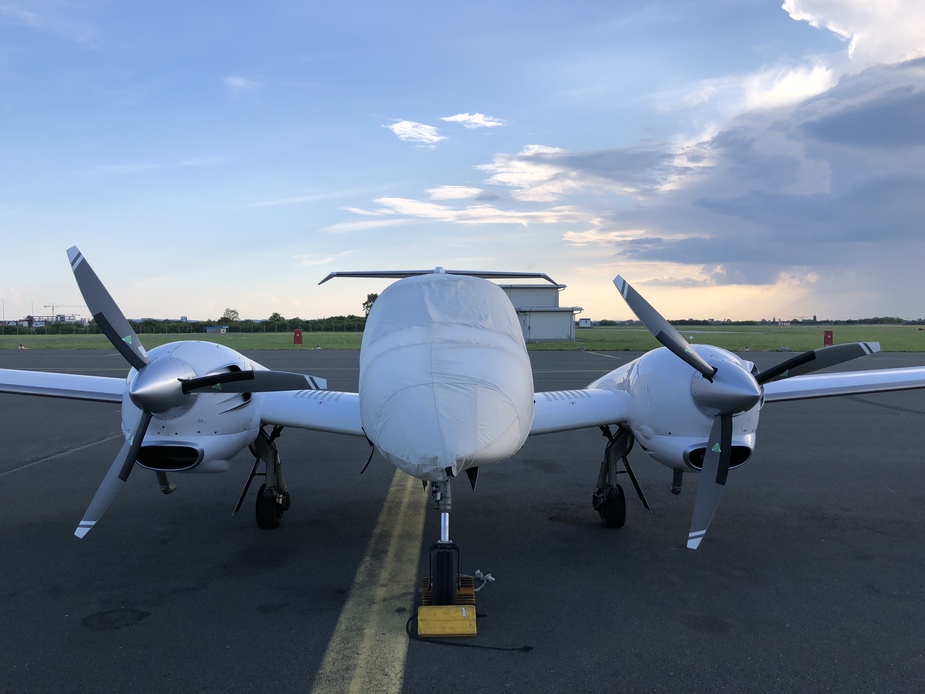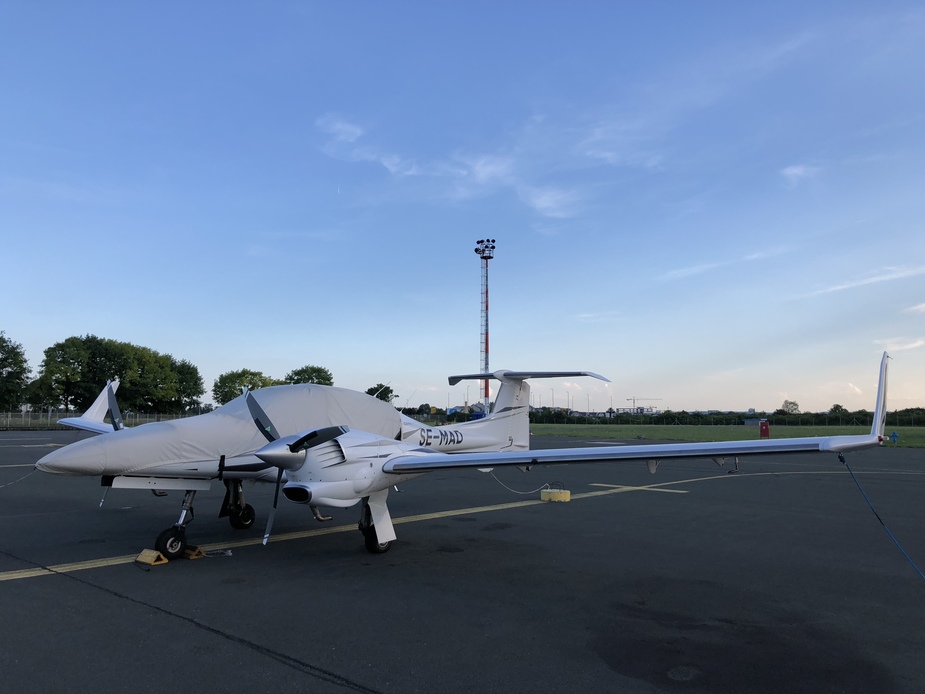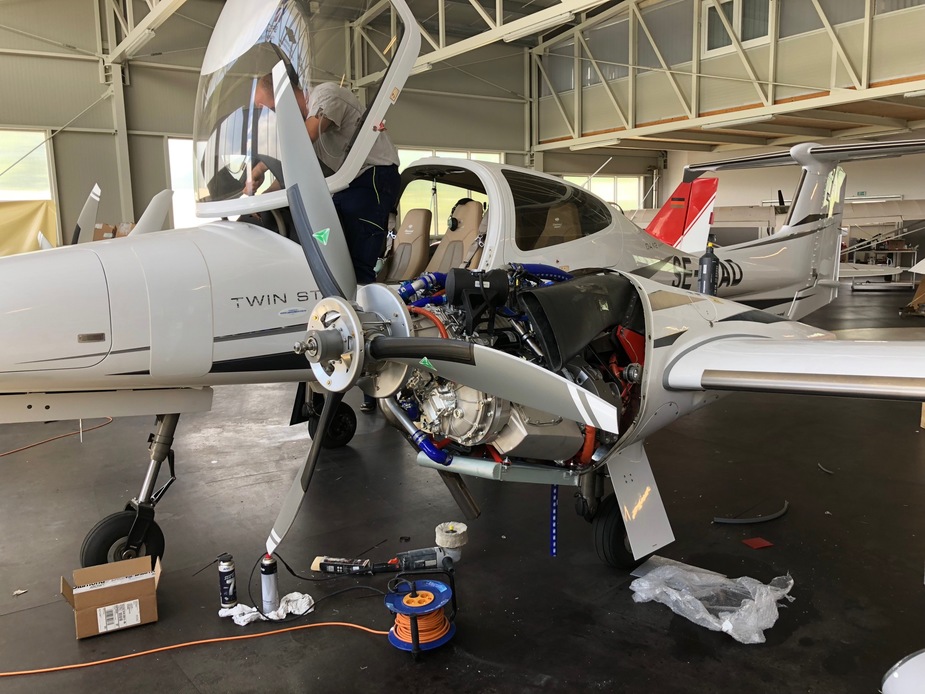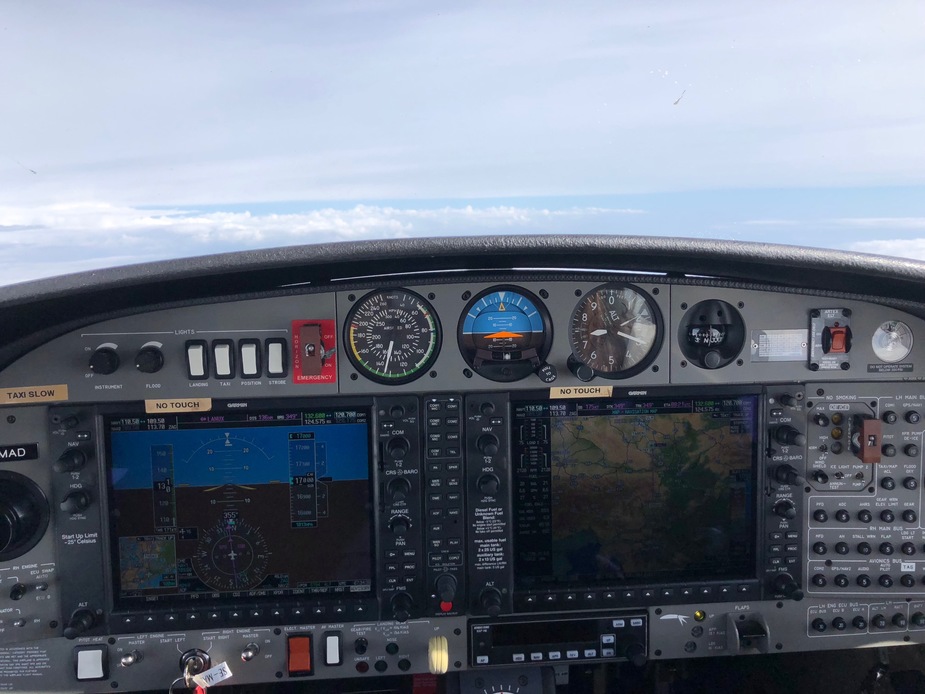Emir wrote:
very close if not better performance in terms of climb and speed
How can you have better performance with 155hp instead of 168 ?
Jujupilote wrote:
How can you have better performance with 155hp instead of 168 ?
The TAE 125-01 that I believe SE-MAD was equipped with has only 135 HP. It is a 1,7 l engine as opposed to the CD-135 which was originally known as the Centurion and is based on a 2,0 l engine block. The CD-155 is basically the same engine with higher output, therefore more heat generated, therefore beefier oil coolers.
The first Austro which equipped the DA42 NG (AE300) and the DA42-VI develops 168 HP but is heavier than the CD-135 and CD-155.
A very interesting writeup, Emir.
You have a great shop to do work on your plane.
One small detail: do the new engines have the same air inlet duct layout? The standard DA42 would get a double engine failure when flying around -15C in IMC, unless alternate air was selected. I wonder if the POH procedure for icing conditions has changed.
Thielert 1.7 and 2.0 (which SE-MAD was equipped with) have both 135 HP but 1.7 had a lot of problems and was discontinued. CD-135 (former Thielert 2.0) and CD-155 (former Thielert 2.0s) are basically the same engines, differently tuned and rated.
@peter No, new engines have different inlet design but POH hasn’t been changed.
I picked up the aircraft yesterday and I’m impressed with numbers I got during the flight back home. I’ll collect some data tomorrow and post it here.
Before finishing the write up just two pics 


That looks very nice. Also the engine cowlings are not the huge ones…
Yes, the protrusion of the cowling, right and behind the cooling inlet does not disturb the lines at all. Nice, these scimitar props!
The first Austro which equipped the DA42 NG (AE300) and the DA42-VI develops 168 HP but is heavier than the CD-135 and CD-155.
Plus the fact that the extra weight is forward of the CoG which as we all know has a negative effect on speed.
In deed, she really looks nice  Congrats!
Congrats!
For the beginning of the second part of the report just short explanation of delay and few last pictures before leaving the shop. As usual, the delay was not caused by one thing but it was a combination of several stuff. As the parts (cowlings, exhaust and props) were supplied from different countries I was unfortunate to hit some public holidays in each country and this caused almost a month of delay. However, Aeroservice worked hard to pick up and complete job once everything was delivered to their shop.


My first flight (after the shop owner made few ground runs and test flights) was short one from Lesce LJBL to Ljubljana LJLJ to do the immigration check, followed by a bit longer flight from Ljubljana to Zagreb LDZA. I didn’t have the opportunity to check many different settings but the numbers I recorded on this flight were exactly as expected.
Altitude 8000 ft, measured TAS:
- load 90% CD-135 160 kts (FF 7.2 g/h per engine), CD-155 171 kts (FF 7.8 g/h per engine)
- load 85% CD-135 156 kts (FF 6.7 g/h per engine), CD-155 168 kts (FF 7.4 g/h per engine)
- load 80% CD-135 153 kts (FF 6.2 g/h per engine), CD-155 165 kts (FF 7.0 g/h per engine)
- load 75% CD-135 150 kts (FF 5.7 g/h per engine), CD-155 161 kts (FF 6.6 g/h per engine)
So the gain in speed from burning more fuel is obvious and it’s some 11 kts TAS at mid-altitudes. However, what surprised me was that I got some speed increase at the same FF – to be checked in the future.
On Sunday I departed from Zagreb to Berlin Strausberg EDAY with plan to test as much a possible combinations of engine load and altitude. However, due to convective weather both on outbound and return flights I was able to check the performance only on higher altitudes.
FL 180, measured TAS:
- load 80% CD-135 167 kts (FF 6.2 g/h per engine), CD-155 175 kts (FF 6.8 g/h per engine)
- load 75% CD-135 163 kts (FF 5.7 g/h per engine), CD-155 173 kts (FF 6.6 g/h per engine)
- load 70% CD-135 160 kts (FF 5.2 g/h per engine), CD-155 170 kts (FF 6.2 g/h per engine)
FL 170, measured TAS:
- load 80% CD-135 165 kts (FF 6.2 g/h per engine), CD-155 175 kts (FF 6.8 g/h per engine)
- load 75% CD-135 161 kts (FF 5.7 g/h per engine), CD-155 171 kts (FF 6.5 g/h per engine)
- load 70% CD-135 158 kts (FF 5.2 g/h per engine), CD-155 168 kts (FF 6.2 g/h per engine)
So it seems consistent to gain in speed at mid-altitudes comparing to CD-135 – it’s around 10 kts TAS at the same load percentage. And again as in previous flight I noticed the gain in speed at same FF.

Regarding climb performance, that something that I have to measure across several flights but initial results seem to be ok. I measured it at MTOW and got following reults:
- up to 6000 ft, 100 KIAS, 1200 fpm, 100% load
- to 8000 ft, 102 KIAS, 1100 fpm, 100% load
- to 9000 ft, 102 KIAS, 1100 fpm, 98% load
- to 10000 ft, 100 KIAS, 1000 fpm, 97% load
- to 11000 ft, 98 KIAS, 1000 fpm, 95% load
- to 12000 ft, 92 KIAS, 900 fpm, 92% load
- to 13000 ft, 91 KIAS, 900 fpm, 91% load
- to 14000 ft, 90 KIAS, 900 fpm, 90% load
- to 15000 ft, 89 KIAS, 900 fpm, 88% load
- to 16000 ft, 89 KIAS, 800 fpm, 87% load
- to 17000 ft, 87 KIAS, 800 fpm, 83% load
- to 18000 ft, 87 KIAS, 800 fpm, 82% load
I picked up initially 100 KIAS as cruise climb speed just to see how fast I can climb at “high speed”. However, climbing at 86 KIAS (POH value for cruise climb) gives 1350 fpm or better at lower altitudes. 8000 ft is critical altitude for CD-155 and after that max available power decreases. Next time I’ll climb at constant IAS (e.g. 90 kts) all the way to cruise altitude to check how rate of climb decreases at higher altitudes.
OEI performance was tested only during test flights, so I have to see it myself. However, it’s not easy to test it at MTOW because usually I’m alone on such flights.
Of course the results are much better than with CD-135 engines – e.g. with CD-155 I had 1400 fpm at 1000 ft climbing at 86 KIAS while with CD-135 I had 1100 fpm under same conditions.